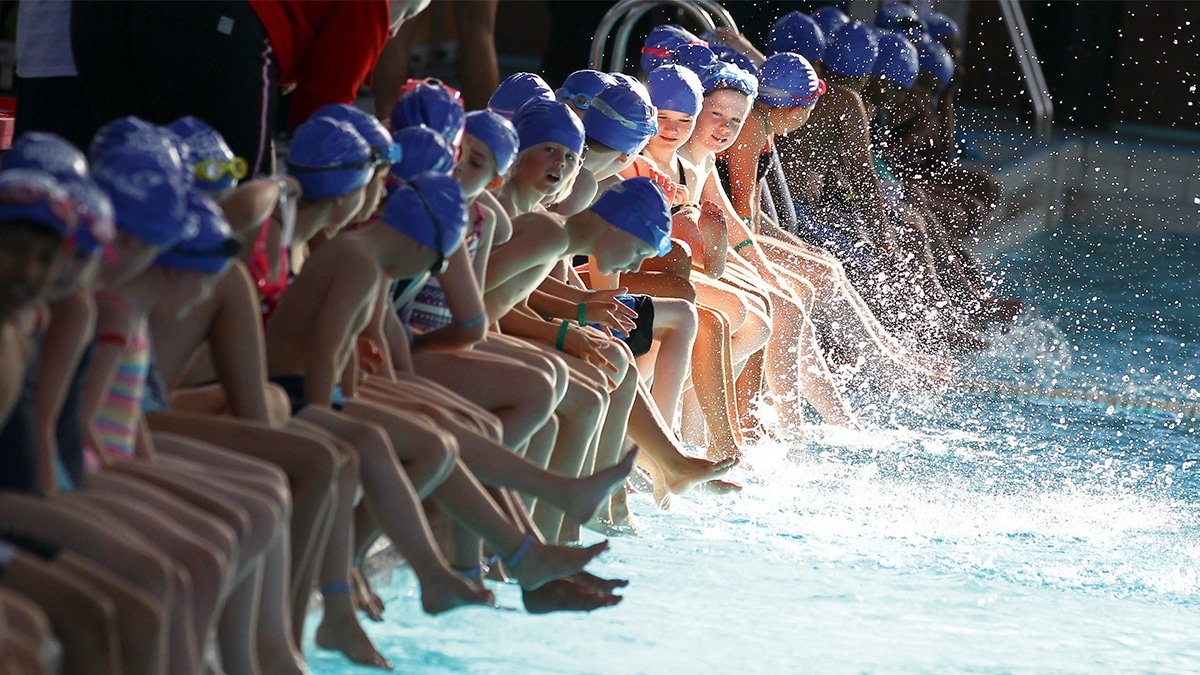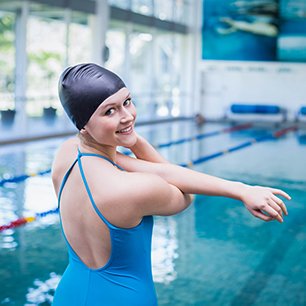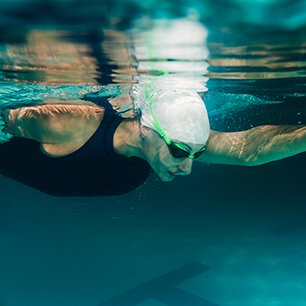
Adult Swimmers
Our Adult swim groups are really friendly and welcoming, keeping you fit, healthy and happy! We cater for a range of different abilities, including those that have never swum before right up to the practicing triathlete.
Non Swimmers
You will start by improving your basic skills of movement in water. These simple exercises will also help you gain confidence. On your first lessons you will be learning techniques such as, safe entries and exits, gaining water confidence, breathing skills, and how to regain standing position… all skills helpful when swimming.
While using swimming aids, you will practice swimming movements with your arms and legs, learning the movements that cause your body to be propelled through the water. When you have mastered breathing techniques and have become more comfortable in the water, you will advance onto learning swim strokes.


Intermediates
These classes are suited to swimmers who can already swim a few meters on their front using basic front crawl with their face in the water and on your back using basic back crawl and sculling. You will be learning breaststroke and taking a look at butterfly.
Classes will begin swimming on the width and progress to occasional lengths.
Improvers
Swimmers must be confident to go out of their depth and swim front crawl, backcrawl and breaststroke, you will be learning butterfly. Touch turns, tumble turns & shallow dives will be taught.
Classes are taught over the length of the pool.

Session Structure
Each session will normally include:
- Warm up – to include light pool-based exercise designed to get your body ready for action.
- Skill development – helping you develop your technique.
- Main set – This is where the action takes place.
- Swim down – a gentle swim and stretch to finish the session helping to bring your heart rate back to normal.
Swimming Benefits
There are some great reasons for adding swimming to your work-out regime. Here are just a few:

Studies have shown that swimming and running have similar health benefits and can be used together for cross training purposes.

Different swimming strokes challenge different muscles within the body so you can target groups for development.

Because water is about 800 times denser than air, you can work harder in a pool than out of it.

Water-based exercise enables a maximum range of motion and provides multi-directional ‘full body’ resistance that is 12 to 14 times greater than exercising on dry land.

Swimming is also a good option for anyone recovering from an injury, as exercising in the water is non weight bearing. Swimming can reduce the risk of illnesses, including cardiovascular disease and diabetes, as well as being an effective stress reliever.




